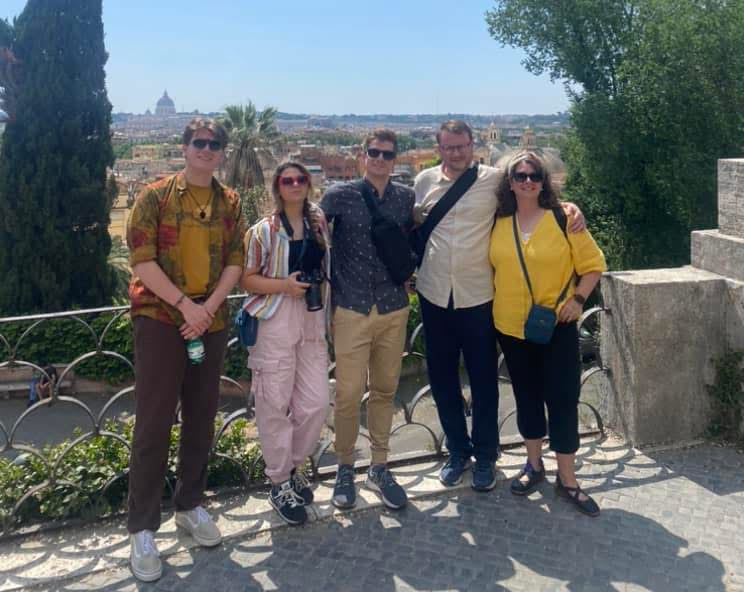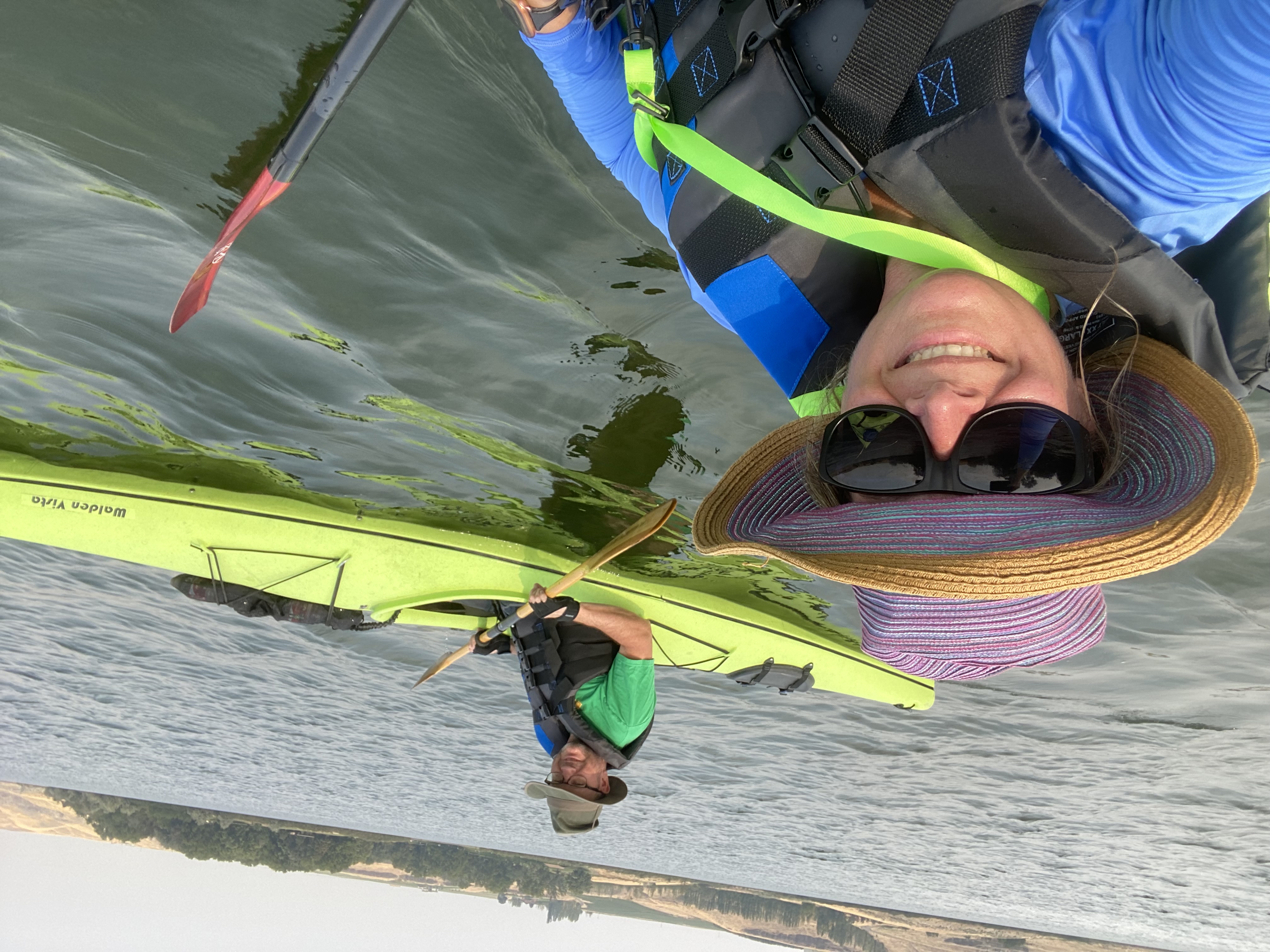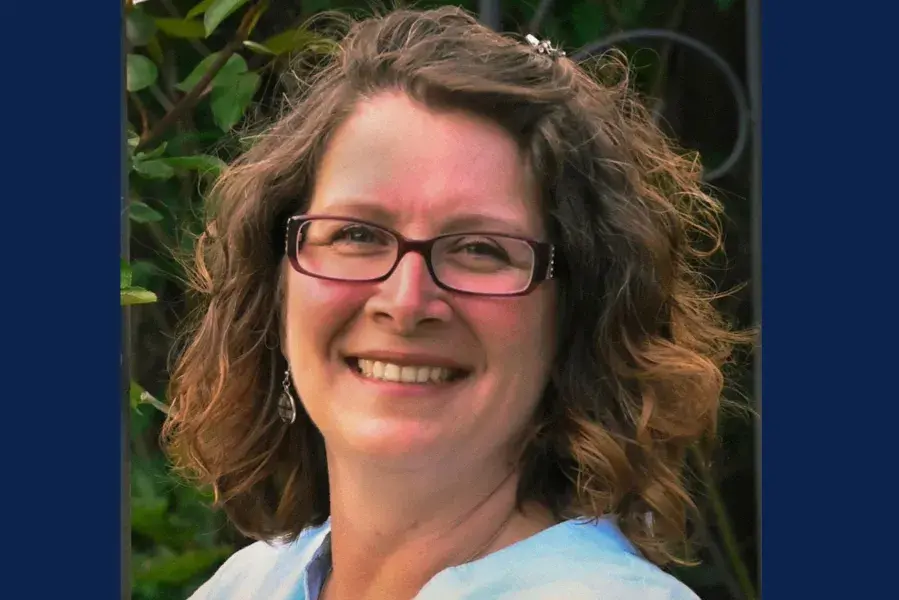Dr. Jennifer Robinson’s world has been flipped upside down many times. Sometimes, she even does it on purpose.
Dr. Robinson’s literal inversion exists in the form of aerial yoga. Through a hybrid of traditional yoga and silks, she regularly goes upside down to decompress from days of teaching and sitting still.
“Aerial yoga is like nothing in the world. You're just floating,” explains the program chair for GEN103 Information Literacy and an Associate Professor in the Academic Engagement Center at the University of Arizona Global Campus (UAGC). “It's so soothing.”
She has also traveled across continents to teach, from English as a second language (ESL) classes in Asia to remote college courses in the United Kingdom. Each adventure required a quick turnaround to get started, but after 25 years of fulfilling roles teaching kindergarten through university, her adaptability continues to see her through every environment.
Today, she enjoys maintaining an in-depth understanding of dance, her academic expertise, and every undertaking that crosses her desk.
The students who leave my courses are my greatest contribution. I learn more about teaching from them than I have through any textbook.
Applied Teaching Across the Globe
Dr. Robinson lives in Washington state, but her teaching roles have taken her across the world throughout her decades-long career.
Initially, it was her advisor who steered her into the direction of her destiny with a suggestion that changed her path.
Before her extensive work in literacy studies, Dr. Robinson held a director position in social services at a senior living home. Her responsibilities included working with families and teaching them the nuances of care home operations, such as insurance details and common care practices. However, a grueling work environment prompted a move to the teaching sector, and she set out to study psychology at Washington State University.
A shortage of ESL teachers in Washington, coupled with Dr. Robinson’s extensive academic Spanish background, pushed her into a career during her undergraduate studies that exploded right away. After she earned her bachelor’s degree, she earned her TESOL (Teaching English to Speakers of Other Languages) Certification at Ohio State University and went on to make that her higher education mission.
“When I went to do my master's degree, I thought, ‘let's just switch to a master's in education and just see where that gets me,” she recalls.
As her first role, Dr. Robinson helped a high school equivalency program for field workers before moving to Japan. As a TESOL-certified teacher, she taught for a brief stint at Nihon University in Tokyo on a teacher exchange. Additional work volunteering with asylees in Cambridge speaks to the diversity of her certification.
“It's really paid off, being able to do lots of things,” she says. “That TESOL certification really does take you everywhere.”

Projects Old and New
As a UAGC professor, Dr. Robinson taught from the United Kingdom from 2018 to 2023. When her husband received deployment orders from the Department of Defense, she had to relocate, but her Army upbringing made the move a smooth one. The flexibility of her hours meant she was working up to 15 hours a day, but that work included time to pursue her other interests.
Following her rigorous teaching schedule, Dr. Robinson still continues to find projects to occupy her spare time. Her research led her to develop a useful framework for educators, where she coined the PAUSE acronym as a means of offering constructive feedback in academic settings and beyond. This methodology can be employed in any order, but Dr. Robinson notes the principles of the acronym drive positive interactions and outcomes:
“P is positive; give positive feedback. A is applicable; make sure that whatever feedback we're giving is immediately actionable,” Dr. Robinson explains. “U is understandable, because often we forget that there's language undergrads or graduates who may not understand what we use daily. So, make sure that the feedback is understandable. S is specific. Instead of saying, ‘you did a really good job,’ what is the specific behavior we want repeated? I'll tell students, ‘I really appreciated your robust engagement in the discussion this week.’ Then the final one, E is for encouraging.”
Along with her formal studies, she’s looking to add to her published works. Dr. Robinson authored two books, “Becoming and Supporting Online Adjunct Faculty in the Gig Economy” and “Providing Writing Feedback in Online Teaching and Learning.” She also has contributed chapters to other academic publications.
In a digital age, Dr. Robinson uses her work to educate her students about the right way to find information.
“It’s about evaluating the sources we're using, and in our day of getting news off of social media, information literacy is even more important,” she explains.
As a teacher, Dr. Robinson has one more area of expertise in the form of aerial yoga. She enjoys the sport as a means of release and recreation and even houses an A-frame system in her backyard with silks for practicing at home. Eventually, she hopes to use her skills to spread this joy to others as an aerial yoga instructor.
“My goal is to teach aerial yoga for menopausal women,” she explains. “We have to work on balance and stability at this age, so we don't break a hip. We need to work on balance.”

ESL to UAGC
From a young age, Dr. Robinson always knew she would end up as a teacher.
“Being in fifth grade and setting up all my stuffed animals around me to teach them math, so that I could learn the math, was my indication I was a teacher,” she says.
Dr. Robinson joined UAGC in 2016. In addition to holding the program chair and associate professor role for information literacy, she offers dissertation assistance to doctoral candidates. She finds that the fluidity UAGC offers between roles remains a testament to the versatility of the staff.
“We have a depth and training and a depth of experience that allows us to move in and out of different places, but it also shows how much we invest in our faculty,” she notes.
Beyond the quality of her fellow staff and educators, Dr. Robinson finds fulfillment from the student body. She may not be in school anymore, but she continues to learn right alongside her students.
“The students who leave my courses are my greatest contribution,” she says. “I learn more about teaching from them than I have through any textbook.”
Through it all, Dr. Robinson declares her students are her greatest accomplishments. She remains in contact with them after graduation, a point of pride in her career. When one of them authors a book of their own, she makes sure to buy their published work as a show of support.
“I want them to know that we're not only here for a service, but we really are invested in their lives,” she explains.
